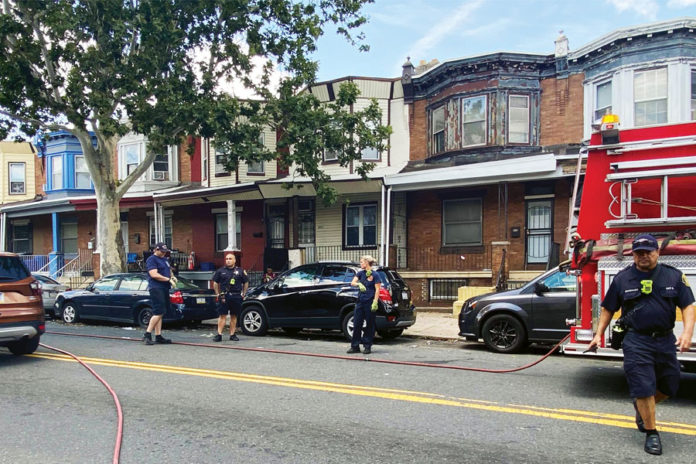
Community partners and residents are working together this summer to Beat the Heat in the North Philadelphia. It has been widely reported that Hunting Park is one of the hottest neighborhoods in the city during the summer, with temperatures nearly 10 degrees hotter than average, and up to 22 degrees hotter than the coolest neighborhoods in Philadelphia.
This extreme difference in temperatures is caused by the differences in physical environment. Wealthier neighborhoods have seen greater investment in green infrastructure, including trees, parks, community gardens, and other green spaces. Green spaces are not only cooler in themselves, and have cooler surface temperatures than concrete or asphalt, but they also provide shade that helps keep surface temperatures down. The tree canopy in Hunting Park is only 7%, compared to an average of 20% across the city and much higher rates in neighborhoods like Chestnut Hill and others. All the unshaded asphalt and concrete in Hunting Park absorbs and then radiates heat well into the evening.



Hotter temperatures have many damaging consequences for a neighborhood that is already struggling with economic disadvantage and disproportionately high rates of certain health problems. Hotter days require more electricity to run fans and air conditioners, resulting in higher utility bills for people who already struggle to afford it. Heat also prevents people from getting outside to exercise, connect with neighbors, and shop at local businesses, and worsens asthma and other conditions. Extreme heat threatens the health of the trees and greenery that are so badly needed, scorching them and causing residents to have to spend more time taking care of them.
What has the neighborhood done to cope? Many people have come together to implement both short-term and long-term solutions to the problem. Organizations like Esperanza, North10 (led by Josh Klaris and Chris Gale), and the Hunting Park Neighborhood Advisory Committee (HPNAC – led by Charles Lanier) are working together with Block Captains, neighborhood youth, and public stakeholders like the City Office of Sustainability to support the community in many ways.
Last summer, the city launched its first official Beat the Heat initiative, with Hunting Park as the pilot neighborhood. Despite the onset of the Covid-19 pandemic, a neighborhood group formed to help distribute air conditioners, fans, and information about how to stay cool, among other activities. This group, now called the Environmental Steering Committee, working alongside the Beat the Heat subcommittee, has implemented a wide range of initiatives to help residents stay safe and cool this summer:
Resource Giveaways at the Individual and Household Level – Neighbors are working together to identify people who need air conditioners, fans, drinking water, electrolyte tablets, etc. Assistance is provided to people who receive air conditioners and fans, so they can get help with the higher electricity bill through LIHEAP and other assistance programs. These efforts prioritize the elderly, families with children, and people with disabilities and special needs.
Structural Interventions at the Block Level – In partnership with Drexel University, the Environmental Steering Committee is expanding on a pilot project implemented last summer, to build cooling structures on Hunting Park blocks – including benches with flower planters and umbrellas, and water sprinklers that cool pavement and provide water play for children. In 2020, Ms. Priscilla Johnson – a Hunting Park block captain – hosted the first Beat the Heat block. This year, the program has been expanded to install nearly 100 shaded benches and planters on half a dozen blocks. Neighborhood youth have been hired to serve as Civic Scientists, collected temperature data to show how well the cooling structures installed on the blocks are working.
Neighborhood-Wide Change – The best long-term solution to the Hunting Park heat problem is more trees and greenery, to bring down the average temperatures in the summertime. The neighborhood works together with the PA Horticultural Society (PHS) to plant street trees twice per year, and to give away yard trees twice per year – once in the fall, and once in the spring. On average, 50 trees are planted or distributed at each event, targeting areas that don’t have greenery.
Neighborhood Taskforces – Other supporting efforts are also underway throughout the neighborhood. The Hunting Park Community Solar Initiative, led by Allen Drew, is hosting workshops to teach residents about green energy, weatherization, and other topics. A group of youth employed through the Philadelphia Youth Network (PYN) and hosted by Esperanza is conducting weekly block cleanups. As more neighborhood groups get involved in different ways, they will make a lasting difference together on the heat problem in Hunting Park.










(Photo: Courtesy/Esperanza)
(Photo: Courtesy/Esperanza)













